
A Crash Course on Cost Basis: What You Should Know
 If you purchase assets for investment purposes, you’ll need to track your cost basis. The Internal Revenue Service (IRS) uses this information to determine tax liabilities. After selling a given asset, you’ll have to report your cost basis for that asset on your taxes. By properly tracking, as well as reporting your cost basis, you can rest assured knowing that you are filing your taxes correctly.
If you purchase assets for investment purposes, you’ll need to track your cost basis. The Internal Revenue Service (IRS) uses this information to determine tax liabilities. After selling a given asset, you’ll have to report your cost basis for that asset on your taxes. By properly tracking, as well as reporting your cost basis, you can rest assured knowing that you are filing your taxes correctly.
What Is Cost Basis?
The term “cost basis” refers to the original purchase price of an asset. It’s used to calculate capital gains and capital losses (see below).
Assets are items of monetary value. They can include tangible items like real estate and equipment, and they can include intangible items like stocks and bonds. The value of an asset, however, may change over time. Assets typically don’t retain their original value indefinitely. Some of them will appreciate, whereas others will depreciate. Regardless, the cost basis of an asset is the original purchase price. It represents the price you paid to acquire the asset.
Cost Basis and Capital Grains vs Losses
The IRS requires taxpayers to report their cost basis after selling assets. When you sell an asset, you’ll either incur a capital gain or a capital loss. Capital gains occur when you sell an asset for a higher price than that for which you purchased it. Capital losses, on the other and, occur when you sell an asset for a lower price than that for which you purchased it. The IRS calculates capital gains and capital losses using the reported cost basis of assets. The difference between the sale price of an asset and the cost basis of the asset will determine capital gains or capital losses.
With capital gains, you’ll incur tax liabilities. There are short-term and long-term capital gains. Short-term capital gains involve assets that are held for less than one year. Long-term capital gains involve assets that are held for longer than one year. Tax rates vary depending on income, but short-term capital gains always come with higher tax liabilities than long-term capital gains.
In Conclusion
Selling an asset is considered a taxable event. And like other taxable events, you’ll have to report it to the IRS. When filing your taxes for the year in which you sold the asset, you’ll need to report your cost basis. It’s essentially the original purchase price of the asset, and it will determine your capital gains or capital losses.
Have anything else that you’d like to add? Let us know in the comments section below!

Financial Accounting vs Auditing: What’s the Difference?
 Think accounting is the same as auditing? Think again. While they both involve the analysis of a business’s financial transactions, they aren’t the same. Accounting and auditing are two different financial processes, each of which works in a different way
Think accounting is the same as auditing? Think again. While they both involve the analysis of a business’s financial transactions, they aren’t the same. Accounting and auditing are two different financial processes, each of which works in a different way
What Is Accounting?
Accounting is the process of documenting and recording financial transactions associated with a business. Businesses make money, and they spend money. They make money primarily by selling products or services to their target audience. And businesses spend money on payroll, equipment, inventory, insurance and other expenses so that they can perform these sales operations.
Businesses must track both credit- and debit-based financial transactions. By tracking their financial transactions, they can prepare their taxes, cut costs and, ultimately, maximize their profits. This is where accounting comes into play. Accounting allows businesses to track their financial transactions using a set of formal guidelines or accounting principles.
What Is Auditing?
Auditing is the process of evaluating financial transactions, as well as accounting documents, for errors. Most businesses use generally accepted accounting principles (GAAP) when performing accounting. To ensure that their accounting documents comply with the GAAP, businesses may conduct an audit. They can audit their accounting documents while checking for errors such as unrecorded liabilities or unrecorded asset depreciation.
Reconciliation is an auditing process. Available in QuickBooks – as well as other accounting software products – it involves checking the transactions on a bank statement to those recorded in the accounting software. Each transaction should be listed on the appropriate bank statement and in the accounting software.
Differences Between Accounting and Auditing
Accounting and auditing aren’t the same. Accounting revolves around documenting and recording financial transactions. Auditing, on the other hand, revolves around checking financial transactions and accounting documents for errors.
Accounting and auditing also have different goals. The primary goal of accounting is to record all of a business’s financial transactions while following a set of guidelines or principles, such as the GAAP. The primary goal of auditing, conversely, is to check the accuracy of financial transactions and accounting documents.
Businesses may perform accounting and auditing either in-house, or they may outsource it. Regardless, accounting and auditing are essential financial processes. They are necessary for nearly all businesses. Accounting is all about documenting and recording financial transactions, whereas auditing is all about checking financial transactions and accounting documents for errors. They are different businesses-related financial processes.
What are your thoughts on accounting and financing? Let us know in the comments section below!
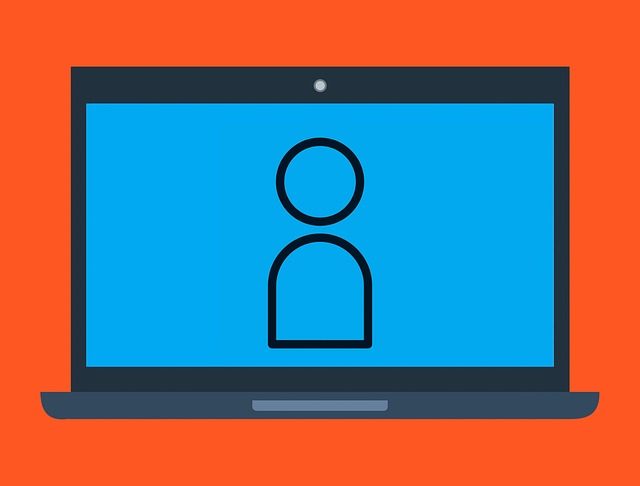
Hosted QuickBooks: Why You Should Choose Third-Party Hosting
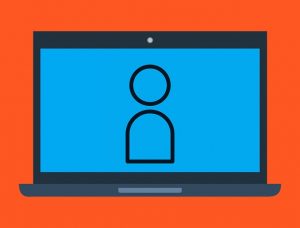 You don’t have to host QuickBooks Desktop yourself. Not to be confused with QuickBooks Online, QuickBooks Desktop is the locally installed version of Intuit’s popular accounting software. You can install it on nearly any desktop computer, after which you can use it to track your business’s financial transactions.
You don’t have to host QuickBooks Desktop yourself. Not to be confused with QuickBooks Online, QuickBooks Desktop is the locally installed version of Intuit’s popular accounting software. You can install it on nearly any desktop computer, after which you can use it to track your business’s financial transactions.
Rather than hosting QuickBooks Desktop on your own computer, though, you should consider choosing a third-party hosting service. There are authorized hosting service providers, including MyVao. They will host QuickBooks Desktop on behalf of your business. By choosing third-party hosting such as this, you can expect the following benefits.
Access From Any Device
You can access QuickBooks Desktop from any device with third-party hosting. Like most locally installed software, QuickBooks Desktop is typically limited to a single device. If you install it on your desktop computer, you’ll only be able to access QuickBooks from that desktop computer.
Third-party hosting will allow you to access QuickBooks Desktop from any device. The accounting software will be installed on the hosting service provider’s server. As long as you’re using a device with an internet connection, you can connect to the server and access QuickBooks Desktop.
Security
You can rest assured knowing that your QuickBooks Desktop company file is secure with third-party hosting. Third-party hosting providers acknowledge the importance of data security. They use secure, up-to-date servers with safeguards in place to protect against breaches. The end result is a higher level of security when compared to hosting QuickBooks Desktop yourself.
Troubleshooting
The hosting service provider can help you troubleshoot any problems that you encounter when using QuickBooks Desktop. Maybe you’re unable to sign in, or perhaps you’re seeing an error code when running reports. With third-party hosting, help is just a call or click away.
Third-party hosting is a partnership. You can partner with an Intuit-authorized hosting service provider. The hosting service provider will host QuickBooks Desktop on a remote server. Since the hosting service provider will take care of the software, it will also provide support. If you’re tired of trying to troubleshoot problems yourself, you may want to switch to third-party hosting rather than hosting your own QuickBooks Desktop installation.
Performance
There are performance benefits associated with third-party hosting as well. Your computer may struggle to run QuickBooks Desktop, for example. Even if it meets the minimum requirements, it may suffer from slow and sluggish performance with inferior hardware. Third-party hosting, though, can eliminate performance problems such as this. QuickBooks Desktop will be hosted on a remote server where it can run faster.
Have anything else you’d like to add? Let us know in the comments section below!
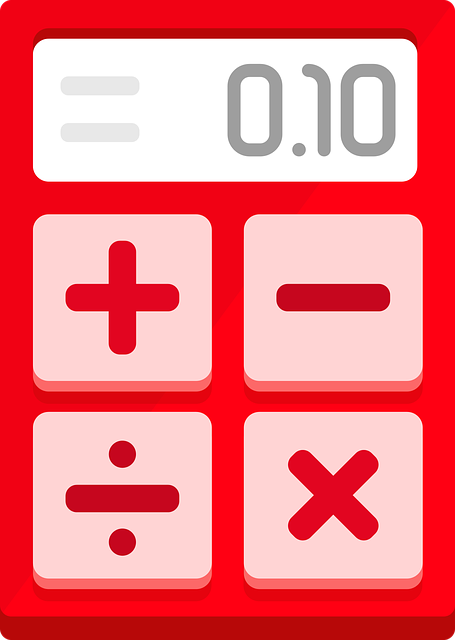
What Is Activity-Based Costing in Accounting?
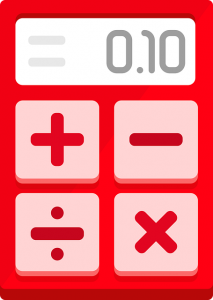
Tracking expenses is an essential part of accounting. You’ll need to know how much money your business spends on various goods and services so that you can deduct them from your taxes. Rather than grouping all of your businesses together, though, you may want to use activity-based costing. Activity-based costing will provide deeper insight into your business’s expenses by allowing you to assign them to activities.
The Basics of Activity-Based Costing
Activity-based costing is the process of assigning expense costs – specifically overhead-related expenses – to activities. It’s commonly used in the manufacturing industry. Manufacturing companies in the United States and abroad often prefer activity-based costing. With activity-based costing, they can assign their overhead expenses to activities. As a result, they can closely track their expenses.
How Activity-Based Costing Works
Activity-based costing revolves around activities. What are activities exactly? In accounting, an activity is any action for which your business incurs an expense. Purchasing new equipment can be considered an activity. Fulfilling a customer’s purchase order can also be considered an activity.
Benefits of Activity-Based Costing
It may sound confusing, but activity-based costing is relatively simple; you just need to assign expenses to activities. Some expenses may have a single activity, whereas others may have multiple activities Activity-based costing involves the assignment of expenses to activities.
You can use activity-based costing to improve your business’s cash flow. If your business operates in the manufacturing industry, it may suffer from a poor cash flow if it produces a surplus of products. If your business produces more products than what it sells, for example, its cash flow will suffer. Activity-based costing can help you improve your business’s cash flow by revealing the activities associated with your business’s production process.
With activity-based costing, you can break down your business’s expenses into the following categories: fixed expenses, variable expenses and overhead expenses.
Another benefit of activity-based costing is product pricing. You’ll have an easier time setting the right price points for your business’s products if you use activity-based costing. You can evaluate the activities associated with your business’s production process. With this information, you can create the perfect price points that allow for maximum profitability while keeping your business’s expenses in check.
Not all businesses use activity-based costing. Nonetheless, it offers several benefits. Activity-based costing is simple, can improve your business’s cash flow, provides insight into expenses and can help with product pricing.
Have anything else that you’d like to add? Let us know in the comments section below!
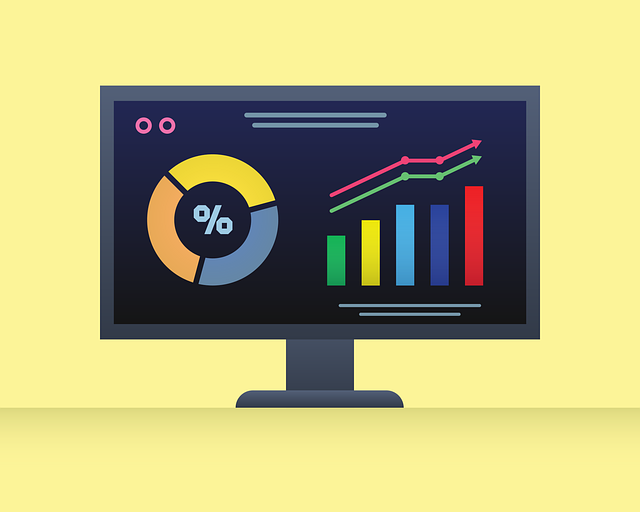
Understanding Accounts Receivable Workflows in QuickBooks
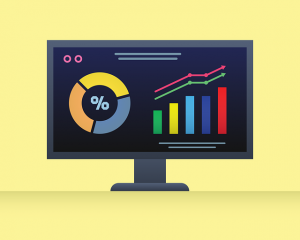
If your business allows customers to pay after their products have been delivered or their services have been completed, you should familiarize yourself with accounts receivable workflows. It’s the multistep process of collecting payments from customers.
Some businesses require customers to pay upfront. Others allow customers to pay after their products have been delivered or their services have been completed. If your business falls under the latter category, you’ll need to use an accounts receivable workflow to collect payment.
Overview of Accounts Receivable Workflows
An accounts receivables workflow consists of the steps that you need to take to collect payment from your business’s customers. It includes multiple steps. With an accounts receivable workflow, you’ll know exactly what to do after delivering products or completing services for customers. The accounts receivable workflow will allow you to collect payment from customers by performing the included steps.
The Importance of Using an Accounts Receivable Workflow
An accounts receivable workflow is an essential part of many businesses’ operations. As previously mentioned, it’s used to collect payment from customers.
Depending on the market in which your business operators – as well as what your business sells – you may need to use an accounts receivable workflow. Nearly all businesses that allow customers to pay after their products have been delivered or their services have been completed need to use an accounts receivable workflow. Otherwise, they won’t get paid.
Different Types of Accounts Receivable Workflows
There are different types of accounts receivable workflows. For project-based services, you may want to begin with an estimate. You can create an estimate for customers. You can then turn the estimate into an invoice and, thus, collect payment.
If you don’t create estimates for customers, you may want to use a simpler accounts receivable workflow. You can use a basic accounts receivable workflow consisting of an invoice, followed by payment. After receiving a customer’s payment, you can deposit it into one of your business’s bank accounts.
These are just a few examples of accounts receivable workflows in QuickBooks. You can create your own, custom accounts receivable workflow in the popular accounting software.
In Conclusion
An accounts receivable workflow is a step-by-step process for collecting payment from customers. It may begin with an estimate, followed by an invoice. Alternatively, an accounts receivable workflow may begin with an invoice, followed by a payment and then a deposit. There’s no single, universal accounts receivable workflow. If you use QuickBooks, you can create your own accounts receivable workflow to accommodate your business’s needs.
Have anything else that you’d like to add? Let us know in the comments section below!
What Is a Roth IRA and How Does It Work?

If you’ve been reluctant to start saving for retirement, you may want to open a Roth IRA. A recent survey found that only 17% of Americans view saving for retirement as a top priority. Most Americans either haven’t started saving for retirement, or they simply don’t prioritize this task. If this sounds familiar, you may want to open a Roth IRA. It will give you a head-start on retirement.
The Basics of a Roth IRA
A Roth IRA is a type of individual retirement account that allows you to save after-tax dollars for your retirement. After-tax dollars, of course, is money that you’ve earned and have already paid taxes on.
Many employers offer Roth IRAs for their employees. Some of them may match their employees’ contributions. If you deposit $5,000 into your employer-sponsored Roth IRA, for instance, the employer may match it by depositing another $5,000. Even if your employer doesn’t offer Roth IRAs, though, you can still open one of these retirement accounts.
Roth IRA vs Other Retirement Accounts
There are other types of retirement accounts. With a Roth IRA, though, you can take advantage of tax-savings benefits. You won’t have to pay taxes on the growth earnings of your Roth IRA contributions.
You can use your Roth IRA contributions to invest in stocks, mutual funds or other investment securities. As the value of these investments increases, so will the value of your Roth IRA. While other types of retirement accounts may require you to pay taxes on these growth earnings, Roth IRAs do not
You can also withdraw funds from your Roth IRA after age 59 and ½ without incurring any penalties, assuming your Roth IRA has been active for at least five years.
How a Roth IRA Works
A Roth IRA works like most other retirement accounts but with some caveats. It’s a type of personal or individual retirement account that allows you to contribute after-tax dollars while taking advantage of certain tax-savings benefits.
There are limits to Roth IRAs, however. When filing your taxes as single or married filing separately, you can only contribute $6,000 to $7,000 to your Roth IRA per year, assuming your income is less than $129,000 (rules for 2022 income, which may change from year to year).
Regardless, opening a Roth IRA is a great way to start saving for retirement. You won’t have to pay taxes on the growth earnings of your contributions, and you can even withdraw funds from your Roth IRA without incurring penalties once you’ve reached a certain age.
Have anything else that you’d like to add? Let us know in the comments section below!

Accrual Accounting: 5 Things You Need to Know
 Have you heard of the accrual accounting method? It involves recording revenue and expenses when the respective transactions occur. If your business sells services, for instance, revenue-generating transactions may occur before customers actually pay you. With the accrual accounting method, you can record revenue and expenses before money is exchanged. Here are five things you need to know about the accrual accounting method.
Have you heard of the accrual accounting method? It involves recording revenue and expenses when the respective transactions occur. If your business sells services, for instance, revenue-generating transactions may occur before customers actually pay you. With the accrual accounting method, you can record revenue and expenses before money is exchanged. Here are five things you need to know about the accrual accounting method.
#1) Opposite of Cash Accounting
The accrual accounting method is the opposite of the cash accounting method. The U.S. Internal Revenue Service (IRS) supports both types of accounting methods. The cash accounting method involves recording revenue and expenses at the time when money is exchanged. The accrual accounting method, conversely, involves recording revenue and expenses when the transactions occur.
#2) Preferred Method By Medium and Large Businesses
While the IRS supports the cash accounting method and the accrual accounting method, medium and large businesses typically prefer the latter method. Individuals and small businesses typically prefer the cash accounting method. You can typically use either accounting method; just remember to stick with a single accounting method.
#3) Involve Double-Entry Bookkeeping
The accrual accounting method involves double-entry bookkeeping. Double-entry bookkeeping is an accounting technique in which you record transactions twice. If you sell a service for $10,000, you will record a debit of $10,000 when the transaction occurs. Once you receive payment from the customer, you would record a credit of $10,000 to the same accounts receivable and then another $10,000 for a revenue account.
#4) There’s a Hybrid Method
When most people think of accounting methods, they envision the accrual accounting method and the cash accounting method. But there’s another accounting method available: the hybrid method. As you may have guessed, the hybrid method combines elements of both the accrual accounting method and the cash accounting method.
#5) Offers Real-Time Insight Into Financial Health
You’ll have a better understanding of your business’s financial health if you use the accrual accounting method. The accrual accounting method offers real-time insight into your business’s financial health. With the cash accounting method, you won’t realize revenue and expenses until money is exchanged. The accrual accounting method takes a different approach by realizing them when the transactions occur.
There are different methods that you can use to track and record your business’s financial transactions, some of which include the cash accounting method, the accrual accounting method and the hybrid accounting method. The accrual account method is the opposite of the cash accounting. It’s preferred by medium and large businesses, involves double-entry bookkeeping and offers real-time insight into financial health.
What are your thoughts on the accrual accounting method? Let us know in the comments section below!

How to Track Subcontractor Payments in QuickBooks
 Do you outsource some of your business’s operations to subcontractors? Not all workers are classified as employees. In the United States, most workers fall under the category of employee or subcontractor.
Do you outsource some of your business’s operations to subcontractors? Not all workers are classified as employees. In the United States, most workers fall under the category of employee or subcontractor.
Employees are workers who are on a business’s payroll and receive wages and other employee-related benefits. Subcontractors are not on a business’s payment. They still work for other businesses, but Subcontractors have autonomy. They can choose which jobs they want to perform, and they aren’t eligible for employee-related benefits. If your business relies on the services of subcontractors, you’ll need to track their payments. Fortunately, QuickBooks makes it easy to track subcontractor payments.
Ask Subcontractors to Complete a 1099
You should ask all subcontractors who you are planning to pay at least $600 per year to complete a W-9. You can download a blank 1099 at the official Internal Revenue Service (IRS) website. This form is required for subcontractors.
Add Subcontractors as Vendors
For QuickBooks Desktop, the easiest way to track subcontractor payments is to add them as vendors. You can create a separate vendor in QuickBooks Desktop for each of your business’s subcontractors. Vendors are typically associated with manufacturers or product suppliers, but you can use them for other purposes, such as subcontractor tracking.
To add a subcontractor as a vendor in QuickBooks Desktop, click the “Vendors” menu and select “Vendor Center.” Under “New Vendor,” select “New Vendor.” Next, enter information about the subcontractor in the appropriate fields. When you are finished, click “OK” to complete the process.
Tracking Subcontractor Payments: What You Should Know
You can track subcontractor payments by going back to the “Vendor Center” and clicking “Edit” next to the subcontractor’s name. In the “Tax Settings” tab, click the box for “Vendor eligible for 1099.” You can then enter the subcontractor’s tax identification number.
QuickBooks Desktop will begin to track the subcontractor’s payments after you enter his or her tax identification number. And when it’s time to file the subcontractor’s 1099 with the IRS, you can pull these payments automatically.
A tax identification number is a unique number that the IRS uses to record revenues for subcontractors. Employees will typically have an employee identification number, whereas subcontractors will have a tax identification number. When tracking subcontractor payments, you’ll need to enter their tax identification numbers in QuickBooks Desktop.
Did this tutorial work for you? Let us know in the comments section below!
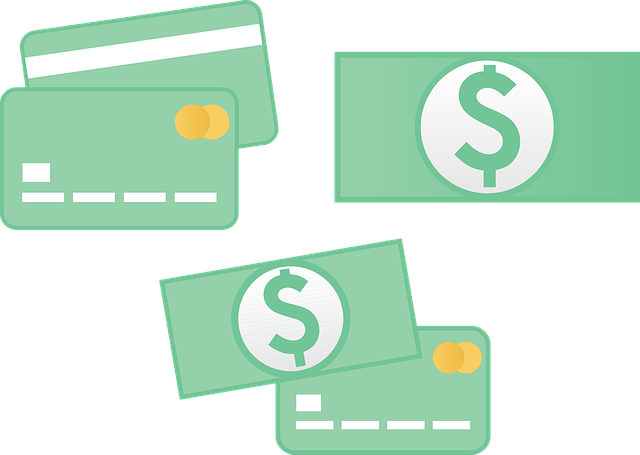
What Is Bad Debt and How Do You Prevent It?
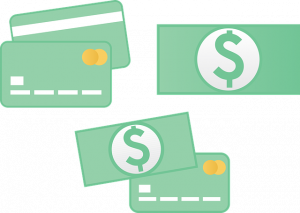 When running a business, you should stay on top of accounts receivable. Accounts receivable, of course, consists of debt that you must collect from customers. You may sell a product or service to a customer, but if you allow the customer to pay at a later date, you’ll have to collect the payment. Failure to do so could result in bad debt.
When running a business, you should stay on top of accounts receivable. Accounts receivable, of course, consists of debt that you must collect from customers. You may sell a product or service to a customer, but if you allow the customer to pay at a later date, you’ll have to collect the payment. Failure to do so could result in bad debt.
The Basics of Bad Debt
Bad debt is any debt that is deemed uncollectible. Customers will incur debt when they purchase your business’s products or services while agreeing to pay for them at a later date. Your business, on the other hand, will incur accounts receivables.
Accounts receivables are technically an asset. They are recorded as assets on balance sheets. But you’ll still have to collect those payments from your business’s customers. If a customer fails to pay your business by the agreed-upon due date – and you’ve determined that the debt is uncollectible – your business will have bad debt.
How to Prevent Bad Debt
There are several things you can do to prevent bad debt. Before allowing new customers to make purchases on credit, run a credit check. You can check a customer’s credit to determine his or her risk of default. If a customer had bad credit or no credit, you may want to avoid extending credit to him or her. Instead, require the customer to pay for products or services upfront to minimize the risk of bad debt.
Creating clear and transparent payment terms can help to protect your business from bad debt. Payment terms, of course, state how and when customers must pay their debt. It should mention the due date, and it should mention any fees, such as late fees. With clear payment terms, more customers will follow through with their debt obligations.
Sending invoices in a timely manner is another tip to prevent bad debt. Invoices feature an itemized list of all products or services purchased by a customer. When customers receive an invoice, they can submit payment for all of the purchased products or services. The longer you wait to send an invoice, though, the greater the risk of bad debt.
In Conclusion
Debt is considered bad if you’ve exhausted all efforts to collect it to no avail. It’s the result of customers not paying their invoices according to the terms set forth. To prevent bad debt, run a credit check on all new customers, create clear and transparent payment terms, and make sure you send invoices in a timely manner.
What are your thoughts on bad debt? Let us know in the comments section below!

What Are Instant Deposits in QuickBooks?
 If you’re tired of waiting several days or longer for customers’ payments to show up in your bank account, you may want to use instant deposits. It’s a feature in QuickBooks Desktop. Assuming you use QuickBooks — and you have a QuickBooks Payments account — you can enable instant deposits. What are instant deposits in QuickBooks exactly, and how do they work?
If you’re tired of waiting several days or longer for customers’ payments to show up in your bank account, you may want to use instant deposits. It’s a feature in QuickBooks Desktop. Assuming you use QuickBooks — and you have a QuickBooks Payments account — you can enable instant deposits. What are instant deposits in QuickBooks exactly, and how do they work?
Overview of Instant Deposits
Instant deposits are exactly what they sound like: deposits that land in your bank account almost instantly.
As a business owner, you’ll probably have to collect payments from customers or clients. Electronic payments, however, may take two or more days to show up in your bank account. With instant deposits, you won’t have to wait. Instant deposits show up in less than a half-hour.
How the Instant Deposits Feature Works
You might be wondering how the instant deposits feature works. QuickBooks will use one of your debit cards to facilitate customer payments if you enable instant deposits. In other words, one of your debit cards will be used to instantly deposit money into your bank account.
How to Get Started With Instant Deposits
Instant deposits is a QuickBooks feature. It’s available in QuickBooks Online and QuickBooks Desktop. But you’ll need QuickBooks and a QuickBooks Payments account to use instant deposits.
To get started with instant deposits, navigate to the “Customers” section in QuickBooks and select “Credit card processing.” Look for an option labeled “Record Merchant Service Deposits.” After clicking this option, select the “Get set up” link under the instant deposit section.
You’ll have to specify a debit card when setting up instant deposits. As previously mentioned, QuickBooks will use one of your debit cards to instantly deposit money into your bank account. You can use either a Visa or Mastercard debit card. When setting up instant deposits, QuickBooks will ask you to enter your debit card number and other information. After linking your debit card to your QuickBooks account, instant deposits will be enabled.
To receive an instant deposit, navigate to “Customers” and choose “Credit card processing.” Next, click “Record Merchant Service Deposits.” You can then choose “Get it fast” for the instant deposit option. When finished, the deposit should show up in your bank account within a half-hour. QuickBooks will simply use your debit card to facilitate the payment.
Did this tutorial work for you? Let us know in the comments section below!
